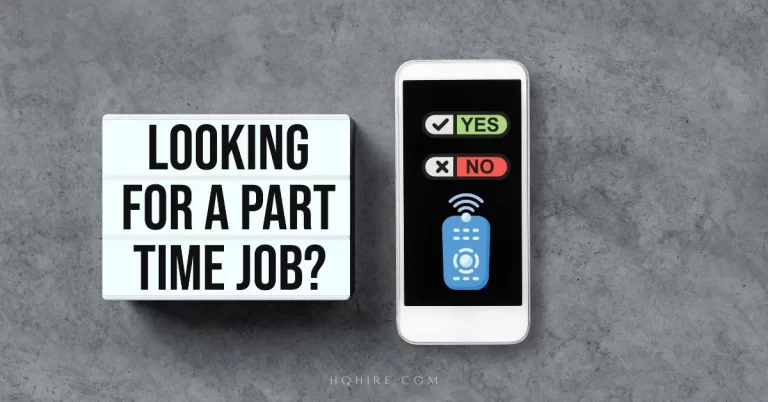Online meetings have become a normal part of everyday life. Yet, spending so much time on video calls can leave you feeling drained and exhausted. To combat online meeting fatigue, you can take simple steps to make your virtual meetings less tiring.
The feeling of being constantly on display can be stressful, which adds to your fatigue.
Regardless, your mental and physical well-being should always be a priority and here is how you can overcome your meeting fatigue and become more productive.
![How to Combat Online Meeting Fatigue [Danger Signs & Solution] 1 A cluttered virtual meeting screen with multiple tabs open, tired eyes, and a clock in the background](https://er6kyrw7tpi.exactdn.com/wp-content/uploads/2024/06/image-19.jpeg?strip=all&lossy=1&ssl=1)
KEY TAKEAWAYS
- Combat online meeting fatigue by setting boundaries and taking breaks.
- Reduce stress by managing performance pressure.
- Use tools to shorten and streamline meetings.
What is Meeting Fatigue? (Online and Offline)
Meeting fatigue happens when you feel tired or drained after long or frequent meetings. This can occur in both virtual meetings and face-to-face meetings.
Research shows that meeting fatigue is linked to boredom and mental underload rather than mental overload. The signs of meeting fatigue include yawning, a lack of focus, and feeling irritable.
- Face-to-face meetings: Fatigue often results from sitting in one place for too long or engaging in prolonged discussions. It’s also linked to badly managed meetings that lack clear objectives or agendas.
- Virtual meeting: Fatigue often called Zoom fatigue, is slightly different. Unlike face-to-face meetings, virtual ones can make you feel tired due to mental underload. This means you might become bored because there aren’t enough engaging activities.
Meeting fatigue make it hard to stay productive, thus recognizing the different types of fatigue and their causes can help you manage your energy better during meetings.
List of Causes of Online Meeting Fatigue
![How to Combat Online Meeting Fatigue [Danger Signs & Solution] 2 A cluttered computer screen with multiple open tabs and a calendar displaying back-to-back online meeting appointments](https://er6kyrw7tpi.exactdn.com/wp-content/uploads/2024/06/image-22.jpeg?strip=all&lossy=1&ssl=1)
- Extended Screen Time: Long hours in front of a screen can strain your eyes and cause headaches. Constant exposure to blue light can also disrupt your sleep making you feel physically tired and impacts your mental clarity.
- Lack of Physical Activity: Sitting for long periods without breaks leads to stiffness and muscle pain. The lack of movement contributes to the feeling of fatigue and discomfort.
- High Cognitive Load: Switching between tasks lead to constant mental juggle that drains your energy. The effort to stay engaged and process information leaves you mentally exhausted.
- Reduced Social Cues: In person meeting let you rely on facial expressions, body language, and other social cues. Online meeting however make these cues are harder to perceive, making communication feel more strenuous. This lack of natural interaction can make you feel disconnected and tired.
- Technical Issues: Dealing with glitches, poor audio, and unstable connections adds stress. Interruptions break your focus and add to the overall fatigue from online meetings.
- Video Fatigue: Seeing yourself on camera all the time can be stressful and tiring. This self-consciousness can make you feel more drained during meetings.
- Privacy Concerns: Working from home blurs the lines between personal and professional space. The constant feeling of intrusion can leave you feeling emotionally exhausted.
Signs of Meeting Fatigue
![How to Combat Online Meeting Fatigue [Danger Signs & Solution] 3 A cluttered virtual meeting space with multiple overlapping screens, tired-looking icons, and a clock showing the passage of time](https://er6kyrw7tpi.exactdn.com/wp-content/uploads/2024/06/image-21.jpeg?strip=all&lossy=1&ssl=1)
Recognizing meeting fatigue early can help manage its impact. Here are key signs to watch for.
1. Mental and Physical Exhaustion
You may feel drained both mentally and physically after video calls. This is more than just typical end-of-day tiredness. It stems from the constant focus required to communicate and interpret cues online.
Unlike physical meetings, virtual ones demand more purposeful engagement, leading to quicker burnout.
2. Reduced Attention Span During Meetings
Struggling to stay focused during virtual meetings is a common sign. You might find yourself frequently distracted or needing to re-read information.
This happens because the brain works harder to pick up social cues without physical presence, overstressing cognitive functions.
3. Avoidance of Meeting
A growing reluctance to join virtual meetings can indicate fatigue. You might start finding excuses to avoid them or feel anxious when another meeting is scheduled.
This avoidance stems from knowing how exhausting these can be, leading to even more reluctance.
4. Lack of Engagement During Meeting
Notice if you or your colleagues are less interactive during calls. Low engagement could mean people are only passively listening, often multitasking to avoid feeling overwhelmed.
This behavior reduces the effectiveness of the meeting and shows signs of fatigue.
5. Increased Stress Level
High stress levels can be a symptom of meeting fatigue. The constant need to be ‘on’ during video calls, dealing with tech issues, and managing home distractions contribute to rising stress.
Over time, this can lead to burnout and decreased work performance.
6. Lack Focus at Work
Overall work focus can drop due to meeting fatigue. If you notice tasks taking longer or increased mistakes, it might be because your mind is too drained from back-to-back meetings to handle other responsibilities efficiently.
7. Unable to Rest Even When Going to Sleep
Persistent fatigue from virtual meetings can affect your sleep quality. You might find it hard to unwind or continue thinking about work issues in bed.
This lack of restful sleep then feeds back into reducing your overall productivity and well-being.
How to Reduce Online Meeting Fatigue?
![How to Combat Online Meeting Fatigue [Danger Signs & Solution] 4 A cluttered desk with a laptop, notebook, and coffee cup. A clock on the wall shows the time. A window with natural light](https://er6kyrw7tpi.exactdn.com/wp-content/uploads/2024/06/image-20.jpeg?strip=all&lossy=1&ssl=1)
Reducing online meeting fatigue involves several key strategies. These include planning meetings well in advance, keeping them short, and making sure only necessary people attend.
1. Create a Meeting Agenda
Share the agenda in advance, so participants can prepare. This ensures that everyone knows what to expect.
- Having a clear agenda helps keep meetings focused and on track.
- Prevent unnecessary detours and save time.
- Keep discussions stay productive.
A concise agenda also helps wrap up meetings on time, reducing the risk of fatigue.
2. Only Invite People Required for The Meeting
Limit invitations to those who really need to be there. This avoids wasting the time of people who aren’t directly involved.
- Smaller meetings can be more efficient and focused.
- Reduces the number of meetings on everyone’s calendar.
By keeping the group small, you encourage more active participation and reduce distractions.
3. Record Online Meeting For Future Reference
Recording meetings can be very useful. This allows those who couldn’t attend to catch up later.
- Reduce the need for follow-up meetings.
- Participants can review the recording to clarify any points they missed.
- Saves time and ensures everyone stays informed.
However, before you hit the record button, make sure that everyone knows about the recording and agrees to it.
4. Create Blocks of Time For Breaks
Schedule breaks between meetings. This gives everyone time to rest and recharge. Back-to-back meetings can be exhausting. Short breaks help reduce stress and maintain focus.
Encourage participants to step away from their screens during these breaks.
Even a few minutes to stretch or get a drink can make a big difference.
5. Limiting Meeting Duration
Keep meetings short. Aim for 30 minutes if possible, and try not to go over an hour.
- Long meetings can drain energy and attention.
- Short, focused discussions are often more productive and less tiring for everyone involved.
Before starting the meeting, explain the importance of staying on topic and resolving issues quickly.
6. Use Team Messaging or Emails to Replace Meetings
Not everything needs a meeting. Use team messaging apps or emails for quick updates or simple questions. This frees up time and reduces the number of meetings.
Written communication can be just as effective, and often faster.
By replacing some meetings with messages, you can keep collaboration smooth without causing fatigue.
7. Create Post-Meeting Action Items Right After The Meeting
Have clear action items at the end of each meeting and assign tasks and deadlines before ending the call.
- Gives everyone a clear idea of what needs to be done next.
- Keeps the momentum going and ensures follow-up.
And a gentle reminder, you need to make sure everyone understands their responsibilities and has a chance to ask questions before wrapping up.
Use Technological Solutions to Reduce Meeting Fatigue
![How to Combat Online Meeting Fatigue [Danger Signs & Solution] 5 A group of digital devices, including laptops, tablets, and smartphones, are arranged on a table. A virtual meeting is displayed on the screens, with various technological solutions being utilized to combat meeting fatigue](https://er6kyrw7tpi.exactdn.com/wp-content/uploads/2024/06/image-18.jpeg?strip=all&lossy=1&ssl=1)
By choosing the right meeting platform and leveraging its features, you can minimize the exhaustion that video calls often bring. These strategies can significantly improve your meeting experience and productivity.
Choosing the Right Meeting Platform
Selecting the right meeting platform is crucial. I’ve tested multiple meeting software platforms and I find a few of them to be pretty amazing, you can check out the exclusive list here:
Here are a few things you want to consider when choosing your meeting platform:
- Always look for platforms that offer reliable performance and are easy to navigate.
- Platforms that provide strong seamless communication.
- Prioritize platforms known for minimal technical issues.
- Offers features like screen sharing, breakout rooms, and background noise reduction
- Supports high-quality video and audio.
Before you sign-up, do ensure the platform can handle the number of participants you expect without degrading performance. Doing so reduces frustration and keeps everyone engaged.
Leveraging Features to Improve Meetings
Many meeting platforms offer features that can help reduce fatigue. here are a few features commonly used by companies and are my personal favorite when using any meeting software:
- Ability to record meetings. This allows team members to review the meeting later, reducing the need to attend every live session and decreasing screen time.
- Scheduling assistants can help manage meeting times more effectively. These tools can suggest optimal times based on participants’ availability, ensuring that meetings are well-timed and less likely to cause scheduling conflicts or stress.
- Instant messaging within the platform can reduce the need for additional follow-up meetings. Chat features allow for real-time questions and feedback, making the session more interactive and reducing the need for lengthy discussions.
- AI-powered transcripts are another valuable tool. They can provide a written record of the meeting, which helps in keeping track of what was discussed without needing to take extensive notes during the meeting. This can significantly reduce multitasking and help maintain focus.
- Screensharing tools. When we are having an online meeting we often requires to share information, and with screensharing tools, it offers us the option to share information easily online.
Get your 100% Free online resume and get noticed by potential employers. Start out of the crowded space of millions of remote job seekers and find the remote job that you will enjoy and love.
![How to Combat Online Meeting Fatigue [Danger Signs & Solution] 6 Jane Doe (Talent Profile)](https://er6kyrw7tpi.exactdn.com/wp-content/uploads/2023/10/Jane-Doe-Talent-Profile.jpg?strip=all&lossy=1&ssl=1)






